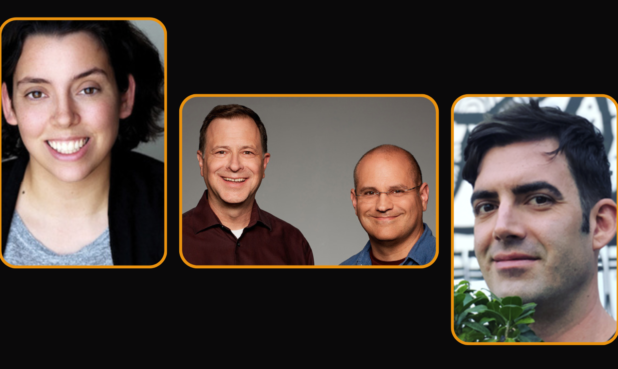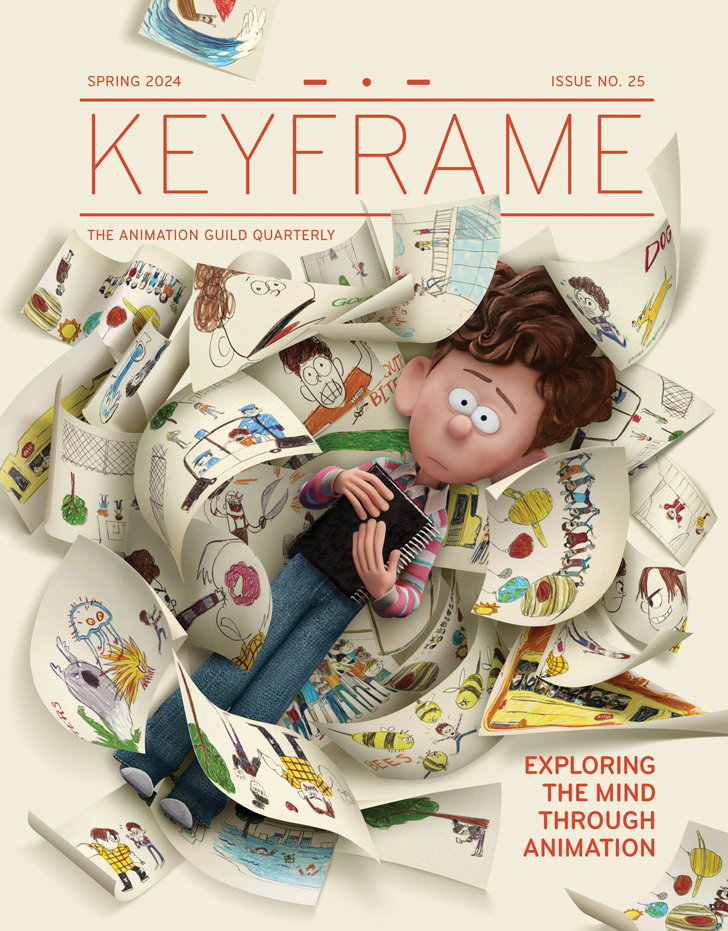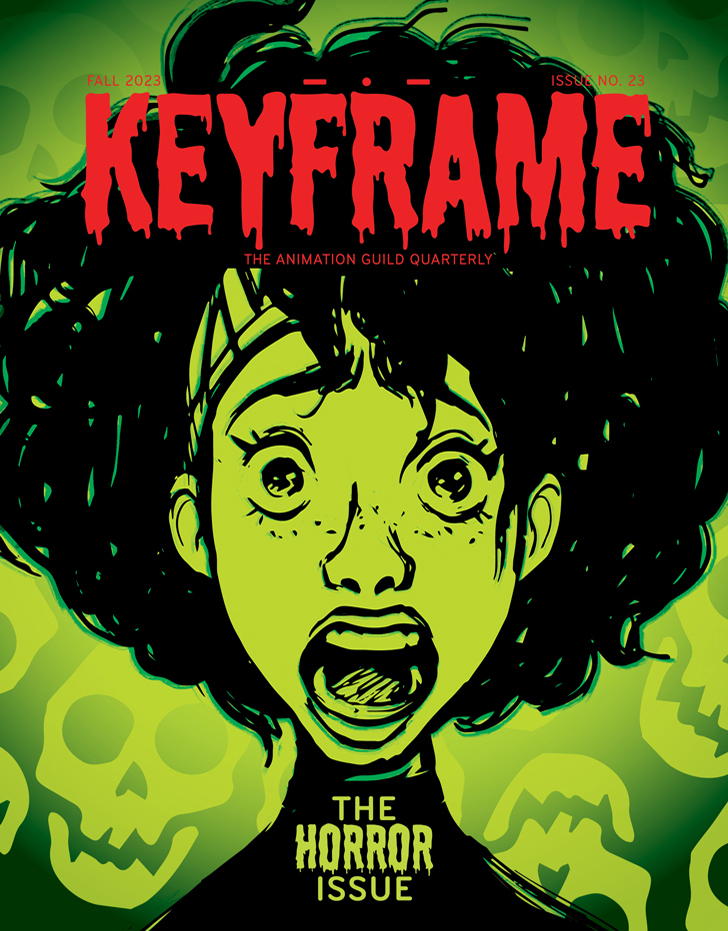What does your typical day or week look like?
Crystal: We usually have a week per episode. We come in, watch the animatic and the retake animation that comes back. Then we have a list of the scenes that have notes on them, so we’ll just pull them. It ranges episode to episode; sometimes we’ll [be] fixing really easy stuff—colors or blinks—and then sometimes it’s starting from scratch and reanimating. Normally, we’re only on one episode at a time. Right now, we currently have three animators, plus our animation director, so she’ll be working on noting other episodes or prepping what’s coming down the pipe while three of us are usually focused on one episode.

Tom: My day right now fluctuates wildly. We’re at the end of production right now so I normally come in and just help with retakes. At the busiest point, my days would be reviewing two separate episodes that were being animated, reviewing layout for another two episodes, sitting in on design for another—I’d have my hands in at least five or six episodes at a time, which is crazy. But then some days, I don’t have any meetings, everything is moving where it needs to be, so I can actually grab a couple scenes and animate myself, and those are very nice days.
Drew: I come in and I fix animation. Some weeks I get to do end credits and I greatly look forward to those. I just pitched my own end credits idea and actually got it greenlit. We’re in our ninth season, [and] there’s so many people working on it. [When] it comes back from Korea, they watch it and they call out notes. Some of the notes are animation, some are like, “Oh, the eye lines aren’t matching up.” If characters are talking to each other they’ve got to be looking at each other correctly. Our coordinators hand us a list of things we [need to] accomplish and we try and knock out the most polished-looking episode that we can.
How do you make sure the animation movement looks right?
Crystal: I have either a mirror or I take a picture or video reference because sometimes you just need to see it. If you act it out, it will push you to actually perform.
Tom: Yesterday, I had to figure out if a turn was working, so I got out of my office and I was walking and turning. People were like, “What’s going on here?”

Crystal: There was one time years ago [when] I was animating a dog and I was on the floor crawling around and people were saying, “What are you doing?” I look like I’m insane but it helps figuring out how something is moving—how muscles work, or how they’re connected, how everything reacts.
Tom: I always go back to that song about how every bone is connected to another bone. Because sometimes you get stuff back where like an arm is moving independently, and I would say, “Well, everything’s connected, so the torso needs to move a little bit too. Remember the song.”
It seems sometimes like animation in TV is becoming a lost art.
Crystal: I know it’s not realistic to bring all of the animation back, but I’d like to have more animation done here. When I started, I was at smaller studios where all the projects were done here from start to finish. And I think that made our industry stronger, to have seasoned animators. Now that so much of it is outsourced, on some of the projects that I was an animation director on, I couldn’t find animators. You’re losing the knowledge of people who actually really understand that craft.
Tom: It just makes it more difficult to find the right people for the job
Drew: I’ve seen a lot of animators move over to storyboards.
Crystal: It’s hard sometimes to find projects that push you as an artist in your ability to grow. You get a job that’s retakes, where you’re fixing animation, sometimes it’s easier to re-animate it. So it also gets a little frustrating that you’ve worked hard to become really good at your craft and then all of a sudden you’re not allowed to be creative.

Is it possible to bring more animation back to LA?
Tom: If you set up the right pipeline, you can do it here with a tight schedule.
Crystal: I was directing on a show that was a series of shorts. There was this one segment that had four different shorts and the producer kept asking me if I wanted to outsource the animation and [I said], no. Eventually, they basically gave me no choice and [said] you have to outsource two out of four shorts. We did the two and then went to work on another project. The other producer pulled me into a room right before they were going to ship it and said, “It’s going be too expensive if we ship these. Do you think your team can get them done?” And I was like, “Absolutely.” And we got it done, and I got it done the way we wanted because we were all right there sitting in a row. I think sometimes the outsourcing model has become the go-to thing that everybody just assumes is cheaper. For certain projects, it makes sense, but for other projects it doesn’t.
Drew: When you export everything overseas and don’t have any in-house people, you are at the mercy of what that company sends back. It [can be] sterile because there is no intuition or passion put into it. If you hire a couple of animators in-house here, we’re hungry. We want to do awesome work, we want to punch it up.
Crystal: I’ve had people over the years question why I’m still an animator. This is what we love. I love timing. I love posing. I love acting. There’s nothing else that I would rather do, and I think by not having animators contribute as much as they used to, something in this industry is getting lost.







.png)